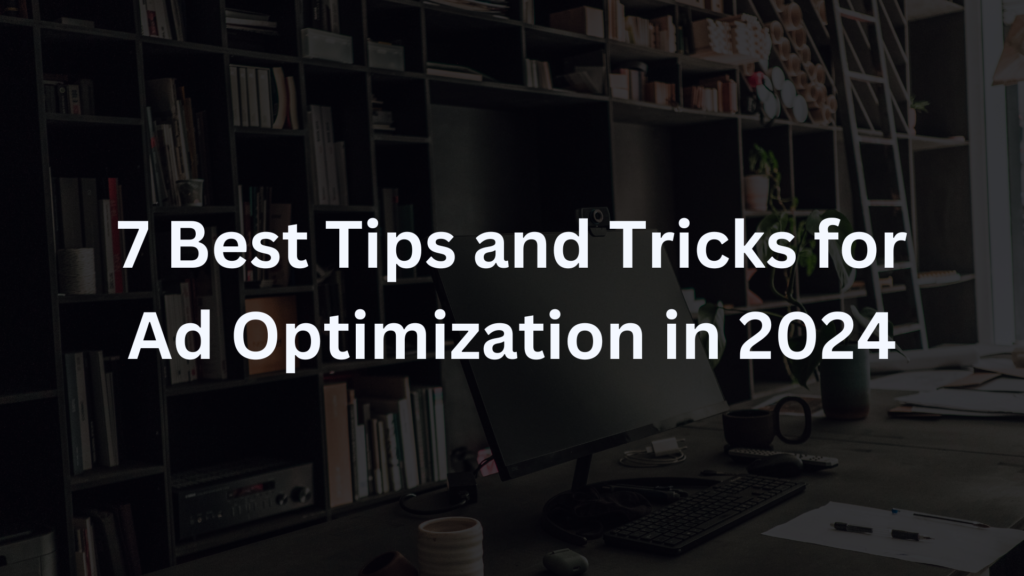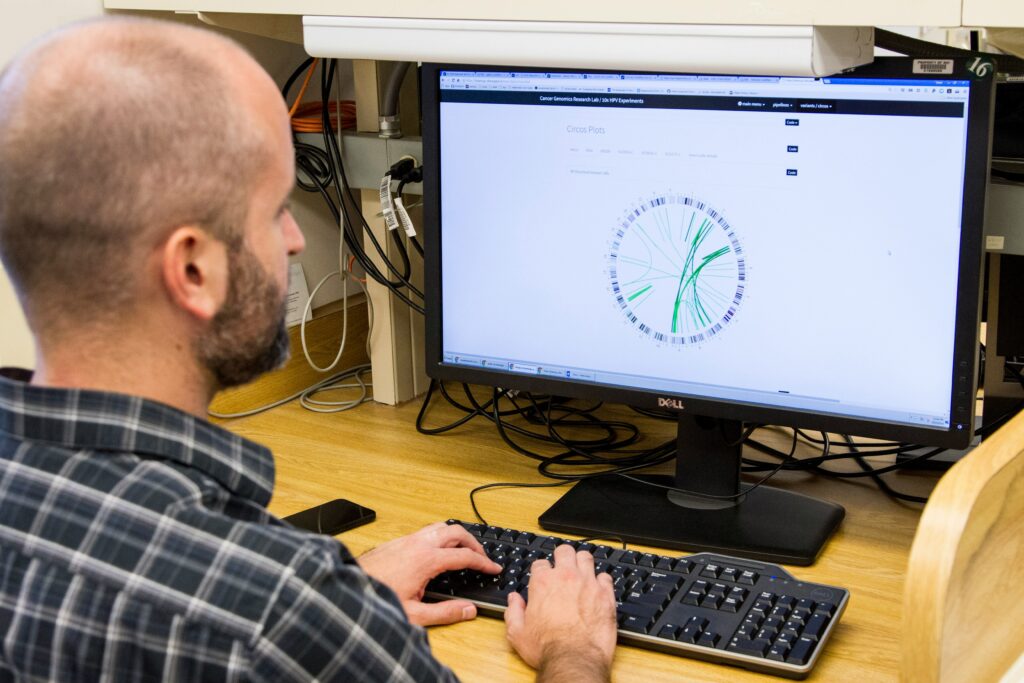
Table of Contents
Toggle7 Best Tips and Tricks for Ad Optimization in 2024
In the dynamic field of digital marketing, ad optimization is essential for maximizing performance and ROI. As we navigate 2024, leveraging advanced techniques and tools is crucial for staying ahead. This blog will delve into seven effective tips and tricks for ad optimization, focusing on long-tail keywords and low-competition phrases to boost your Google ranking. We’ll also include a summary table for easy reference.
1. Understand Your Audience
Understanding your audience is fundamental to ad optimization. Developing detailed buyer personas helps tailor your ads to meet the specific needs and interests of your audience. This targeted approach is crucial for effective ad optimization.
Tips:
- Utilize Google Analytics and social media insights for comprehensive audience data.
- Segment your audience to create ads that resonate with different groups.
Example: For optimal ad optimization, target fitness enthusiasts by segmenting them into categories like yoga practitioners, weightlifters, and runners, and tailor your ad content accordingly.
Beach Money: Creating Your Dream Life Through Network Marketing
2. Leverage AI-Driven Tools for Advanced Ad Optimization

AI-driven tools play a significant role in modern ad optimization. These tools analyze vast amounts of data to uncover trends and automate tasks, enhancing the efficiency of your ad campaigns.
Tips:
- Invest in AI tools for predictive analytics and automated bid management to improve ad optimization.
- Use machine learning algorithms to refine audience targeting and ad performance.
Example: Google Ads and Facebook Ads offer AI features that optimize bids based on performance data, contributing to effective ad optimization.
3. Focus on Long-Tail Keywords for Enhanced Ad Optimization
Long-tail keywords are essential for ad optimization due to their specificity and lower competition. They attract users with specific search intents, often leading to higher conversion rates.
Tips:
- Use keyword research tools like SEMrush or Ahrefs to find long-tail keywords that align with your ad optimization goals.
- Incorporate these keywords into your ad copy and landing pages for better targeting.
Example: For effective ad optimization, instead of targeting broad terms like “running shoes,” use specific phrases like “best running shoes for flat feet.”
4. Implement A/B Testing to Refine Ad Optimization
A/B testing is a crucial technique in ad optimization. By comparing different versions of an ad, you can determine which elements drive better performance and optimize your ads accordingly.
Tips:
- Test variations of headlines, calls to action, and visuals to find the most effective combinations.
- Analyze the results to refine your ad optimization strategy.
Example: To enhance ad optimization, test whether a red or blue call-to-action button results in more clicks and adjust your ads based on the findings.
5. Optimize Ad Copy and Visuals for Maximum Impact
Effective ad optimization requires compelling ad copy and high-quality visuals. Craft ad copy that is clear and persuasive, and use visuals that engage your audience.
Tips:
- Employ strong, action-oriented language in your ad copy for better ad optimization.
- Ensure that visuals are relevant and of high quality to enhance the overall effectiveness of your ads.
Example: For a successful ad optimization strategy, use vibrant images and persuasive language in ads promoting a summer sale, such as “Shop Now and Save 50%!”
6. Monitor and Adjust Bids for Optimal Ad Optimization
Bid management is a critical aspect of ad optimization. Regularly monitor and adjust your bids to ensure your budget is allocated effectively and to achieve the best possible ROI.
Tips:
- Utilize automated bidding strategies to optimize bids in real-time for improved ad optimization.
- Continuously review bid settings and adjust based on performance metrics.
Example: For effective ad optimization, lower bids on underperforming ads and reallocate budget to ads with better performance.
Total Money Makeover: Classic Edition
7. Analyze Competitor Strategies to Improve Ad Optimization

Analyzing competitor strategies provides valuable insights for ad optimization. Understanding what works for competitors can help you identify opportunities and gaps in your own ad campaigns.
Tips:
- Use tools like SpyFu or Adbeat to track and analyze competitor ads and strategies.
- Identify areas where you can differentiate your ads or capitalize on competitors’ weaknesses.
Example: To enhance ad optimization, target keywords that competitors are successfully using or find unique selling points that set your ads apart.
Summary Table
| Tip | Description | Keywords | Example |
|---|---|---|---|
| Understand Your Audience | Develop detailed buyer personas and segment your audience for better ad optimization. | audience targeting strategies, buyer persona development | Target fitness enthusiasts by interest (e.g., yoga, running) |
| Leverage AI-Driven Tools | Use AI tools for predictive analytics and automated management to boost ad optimization. | AI ad optimization tools, machine learning in advertising | Google Ads’ automated bidding features. |
| Focus on Long-Tail Keywords | Incorporate specific, less competitive long-tail keywords to enhance ad optimization. | long-tail keyword research, low competition keywords | “Best running shoes for flat feet” instead of “running shoes” |
| Implement A/B Testing | Test different ad versions to refine ad optimization and identify what works best. | A/B testing for ads, split testing advertising strategies | Compare red vs. blue call-to-action buttons. |
| Optimize Ad Copy and Visuals | Craft compelling ad copy and high-quality visuals to maximize ad optimization. | ad copy optimization tips, creating effective ad visuals | Use vibrant images and strong language in summer sale ads. |
| Monitor and Adjust Bids | Regularly review and adjust bids to ensure optimal ad budget allocation. | bid management strategies, optimizing ad bids | Lower bids on underperforming ads. |
| Analyze Competitor Strategies | Study competitor ads to identify opportunities and gaps for improved ad optimization. | competitor analysis in ads, studying competitor ad strategies | Target keywords where competitors are strong or identify unique selling points. |
Conclusion
Ad optimization in 2024 involves a strategic mix of audience understanding, AI tools, long-tail keywords, A/B testing, compelling ad copy, bid management, and competitor analysis. By applying these tips and referring to the summary table, you can effectively enhance your ad performance and achieve superior results. Embrace these strategies for optimal ad optimization and watch your campaigns thrive!
FAQs on Advertising Optimization
1. What is Advertising Optimization?
Advertising optimization is the process of improving your ad campaigns to make them more effective. This involves tweaking various elements like targeting, bids, and creative content to ensure your ads reach the right audience and generate the best possible results. The goal is to get the most out of your advertising budget by increasing click-through rates, conversions, and overall return on investment (ROI).
2. What is Facebook Ad Optimization?
Facebook ad optimization refers to the methods used to improve the performance of your ads on Facebook. This can include adjusting your audience targeting, refining ad placements, tweaking ad copy and visuals, and using Facebook’s tools to track and enhance your campaign’s effectiveness. By optimizing your Facebook ads, you can ensure they are shown to the most relevant users, increase engagement, and achieve better results.
3. What is Google Ads Optimization?
Google Ads optimization is the process of refining your Google Ads campaigns to enhance their performance. This includes optimizing your keyword selection, adjusting your bidding strategy, refining ad copy and landing pages, and using Google’s tools to track and improve your ads’ performance. The aim is to improve ad visibility, increase click-through rates, and maximize your ROI on Google’s advertising platform.
4. What is Ad Copy Optimization?
Ad copy optimization involves refining the text and messaging of your ads to make them more compelling and effective. This can include tweaking headlines, descriptions, and calls to action to better engage your audience and encourage them to take action. The goal of ad copy optimization is to create ads that capture attention, communicate your message clearly, and drive more clicks or conversions.


